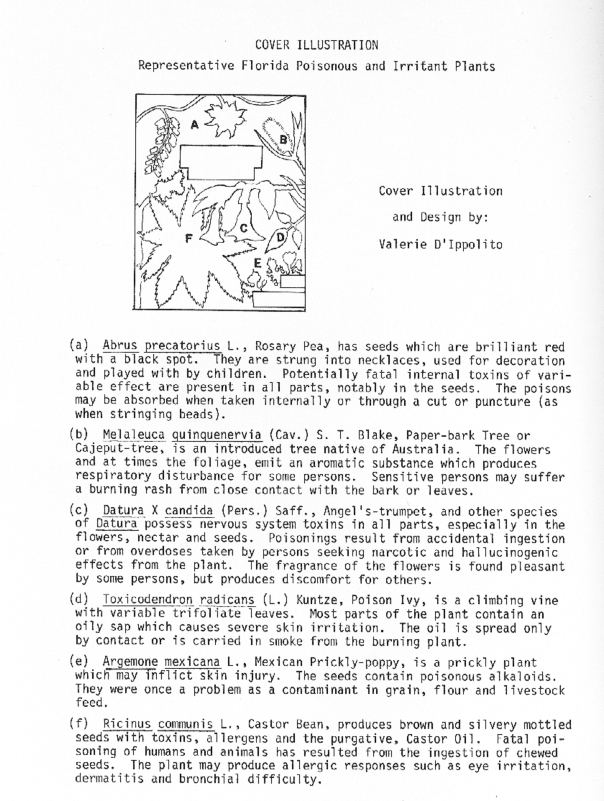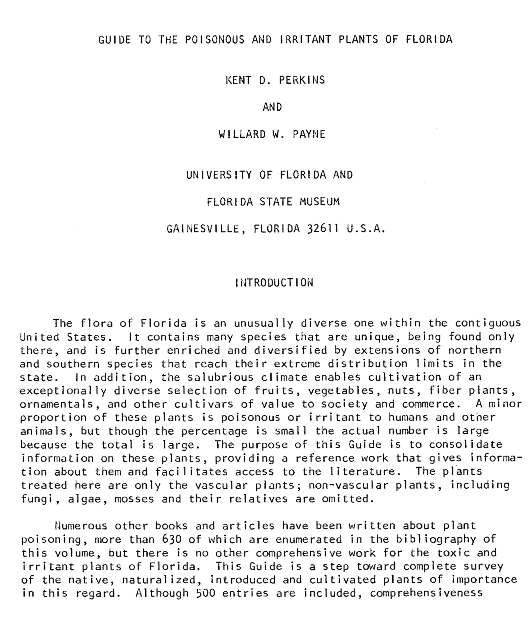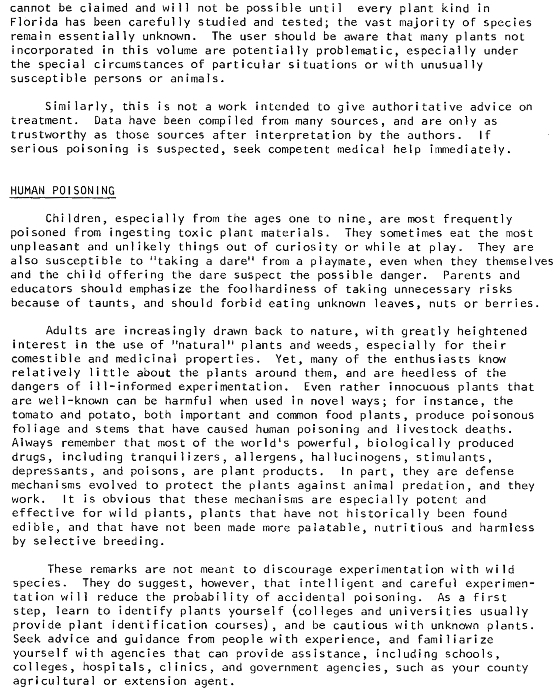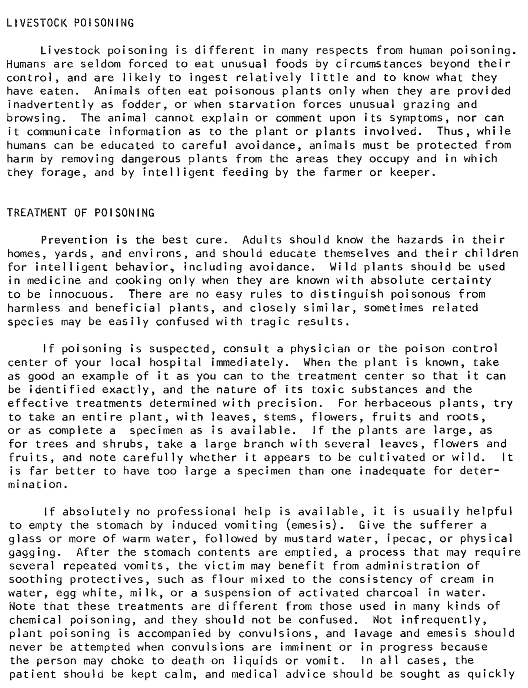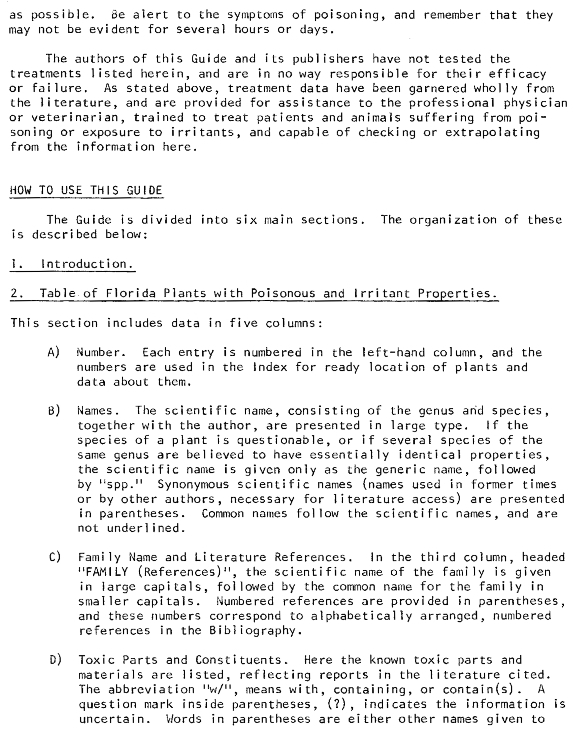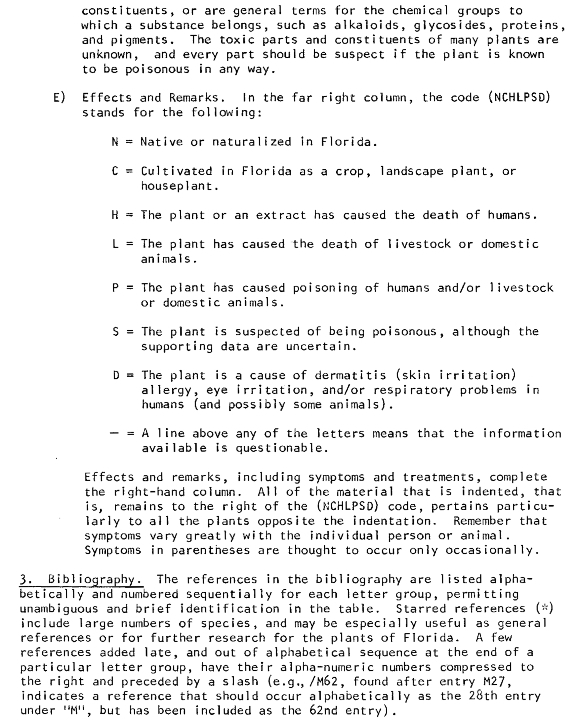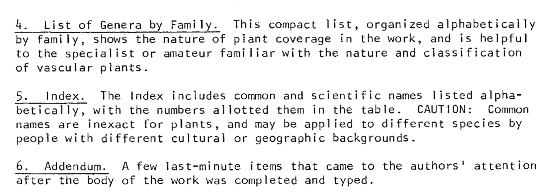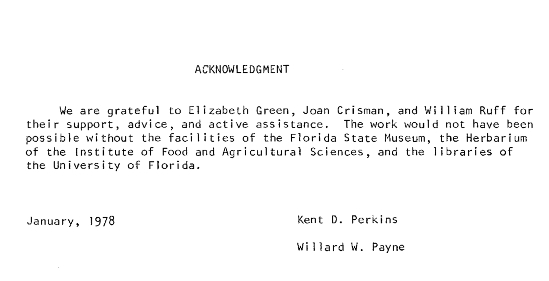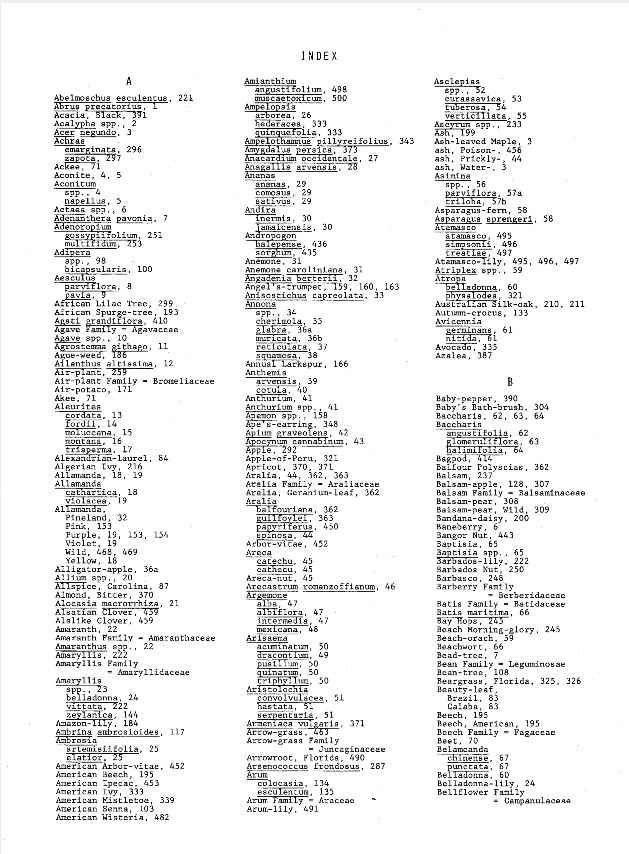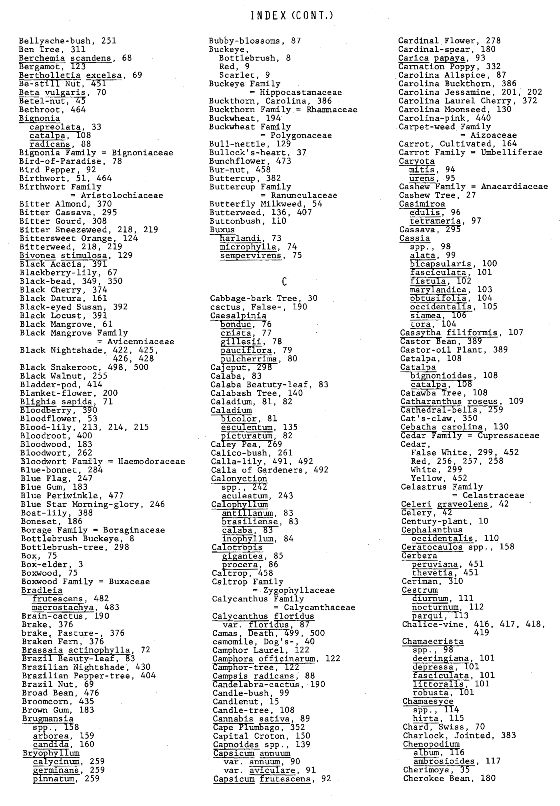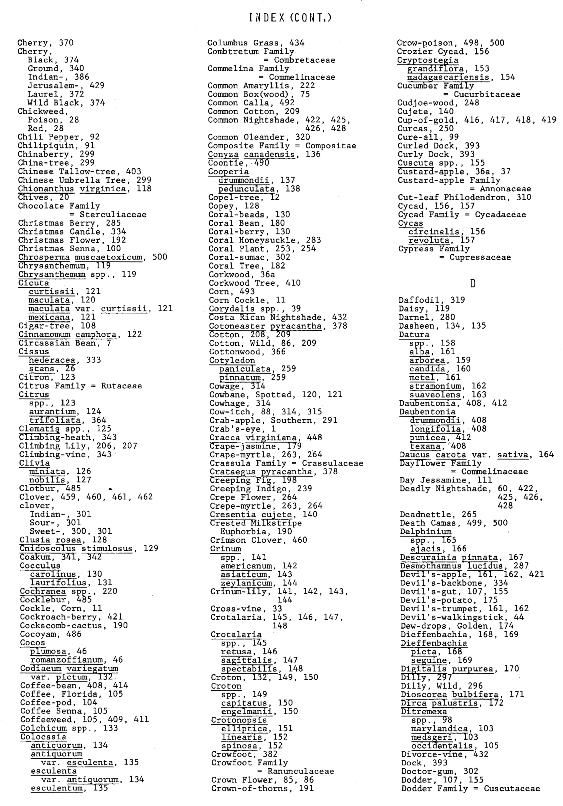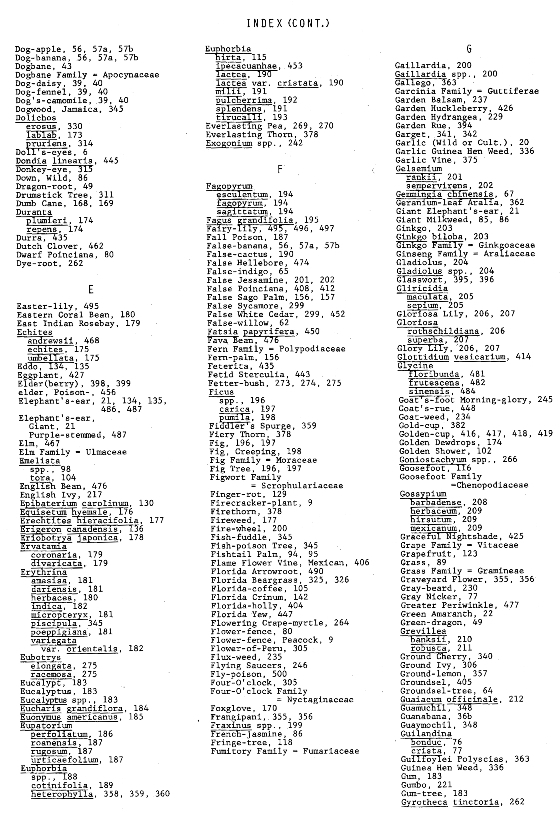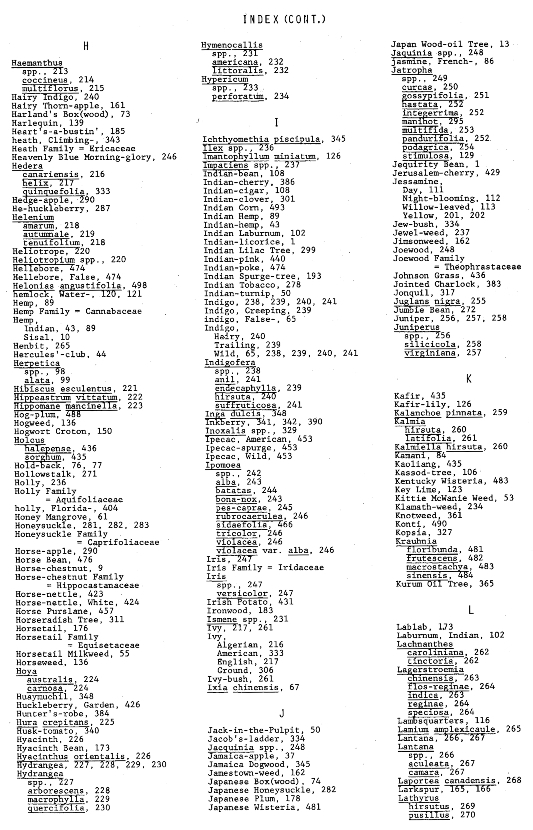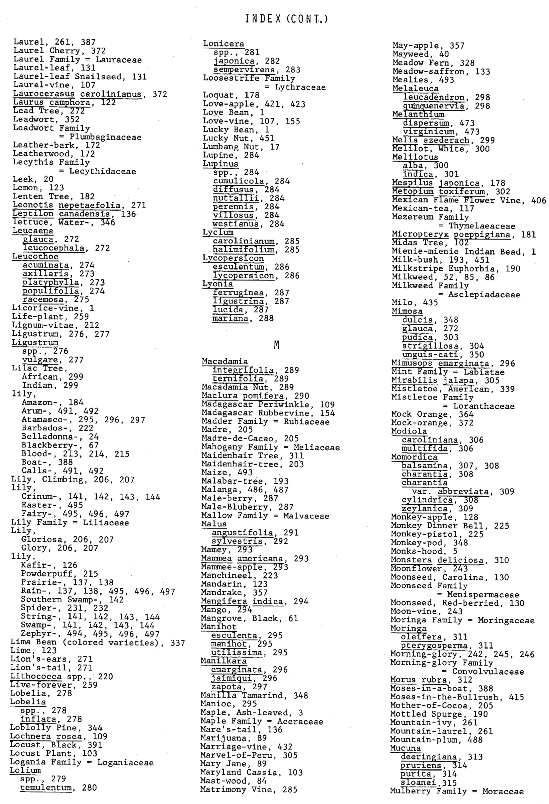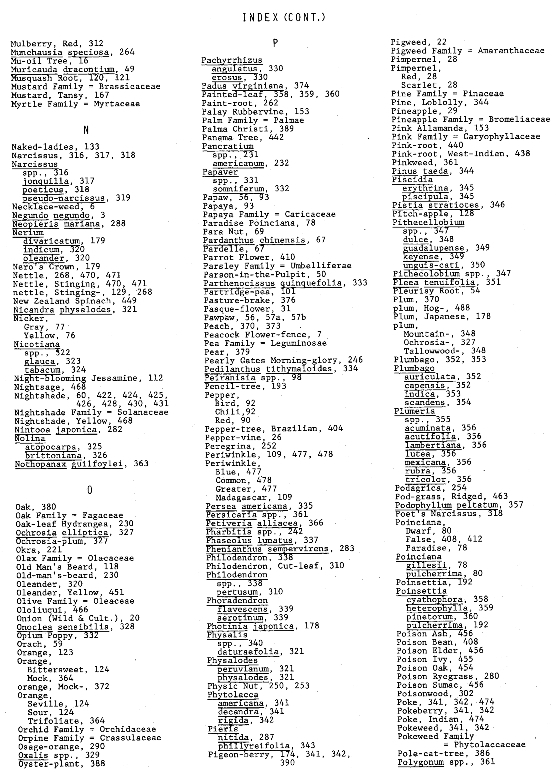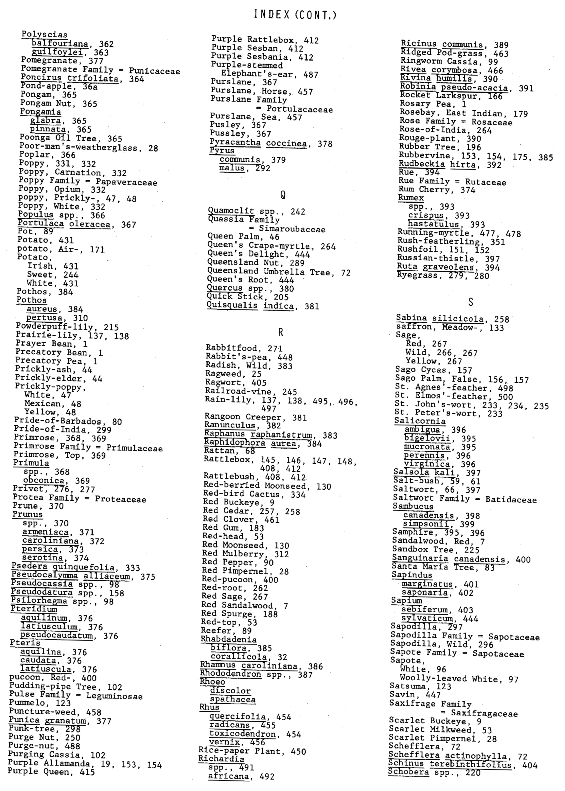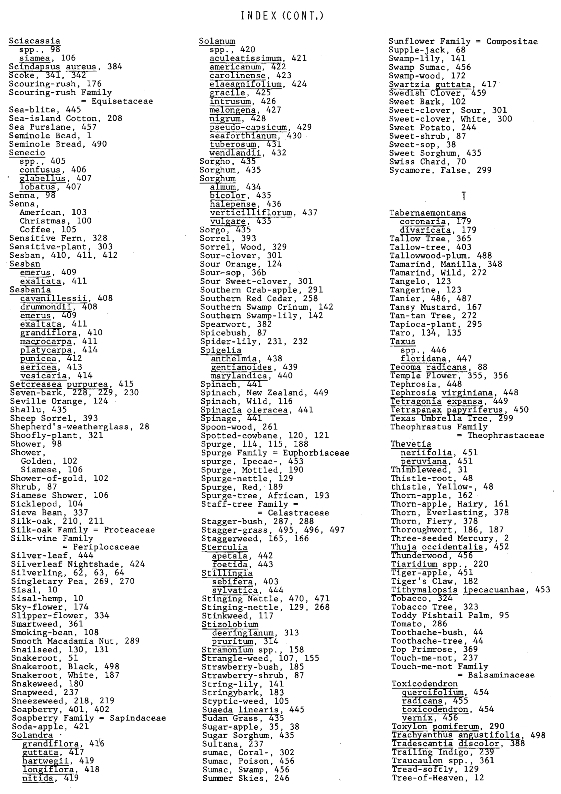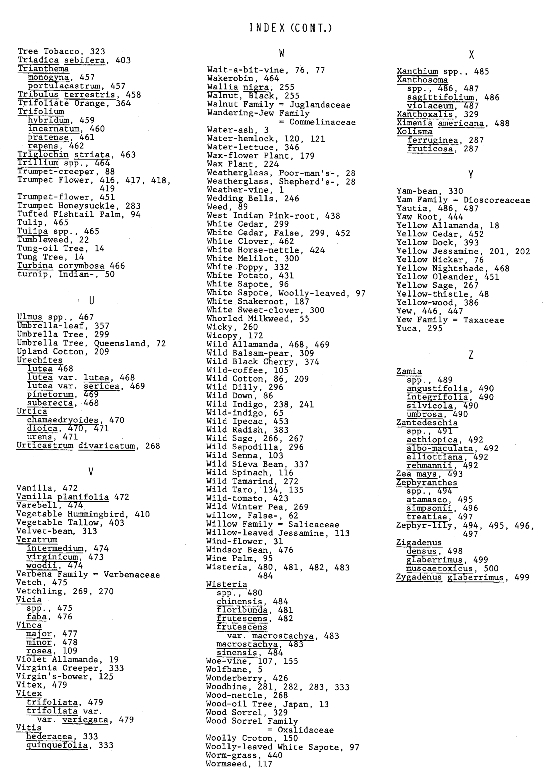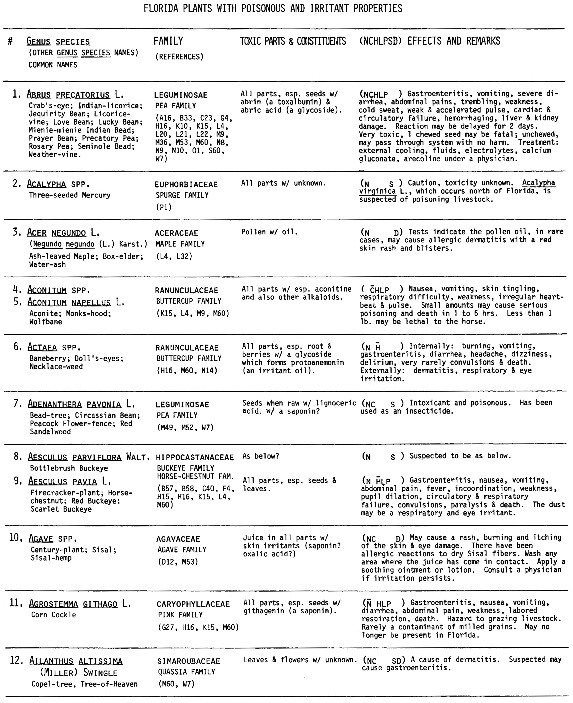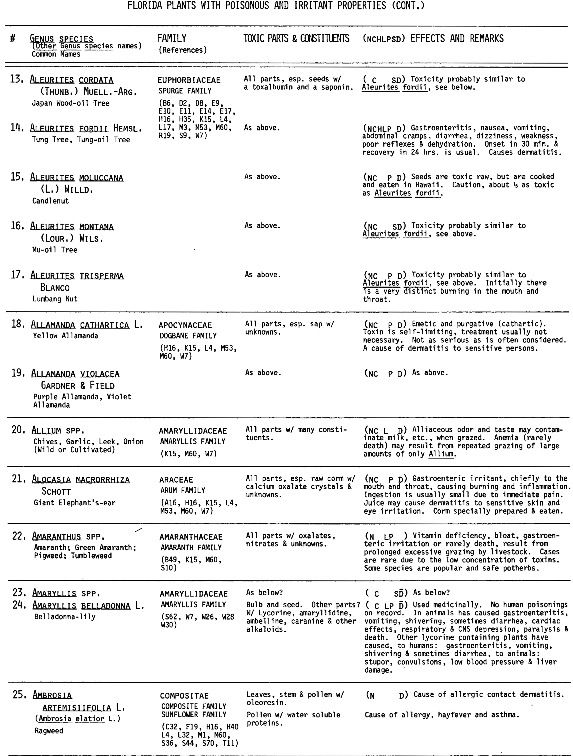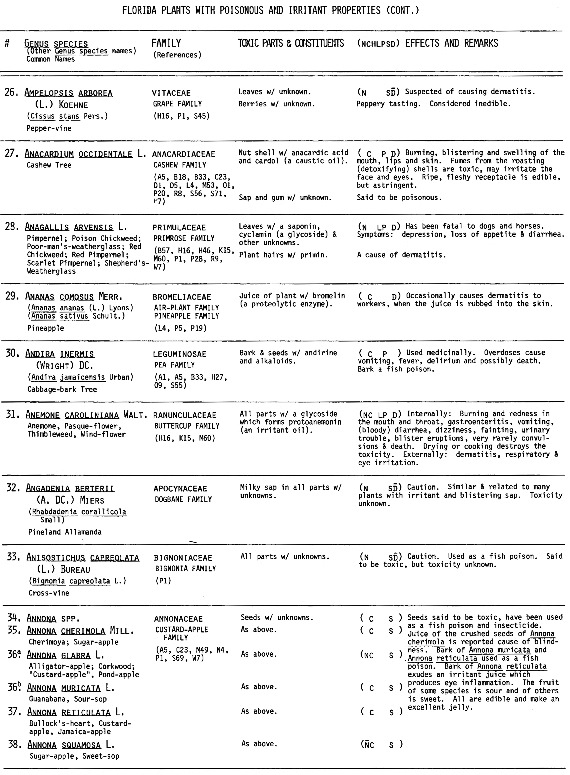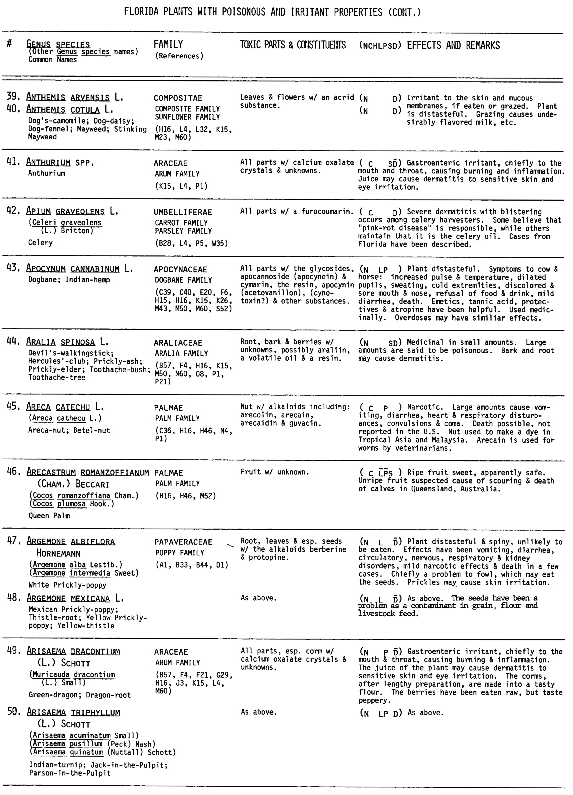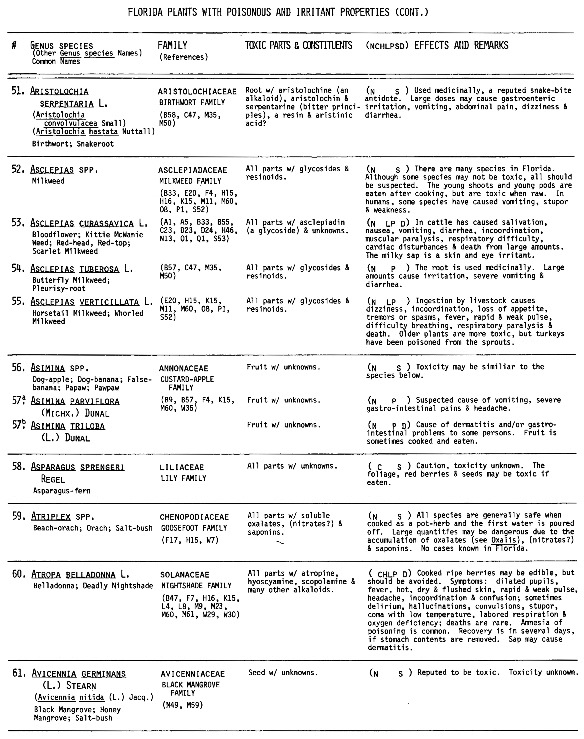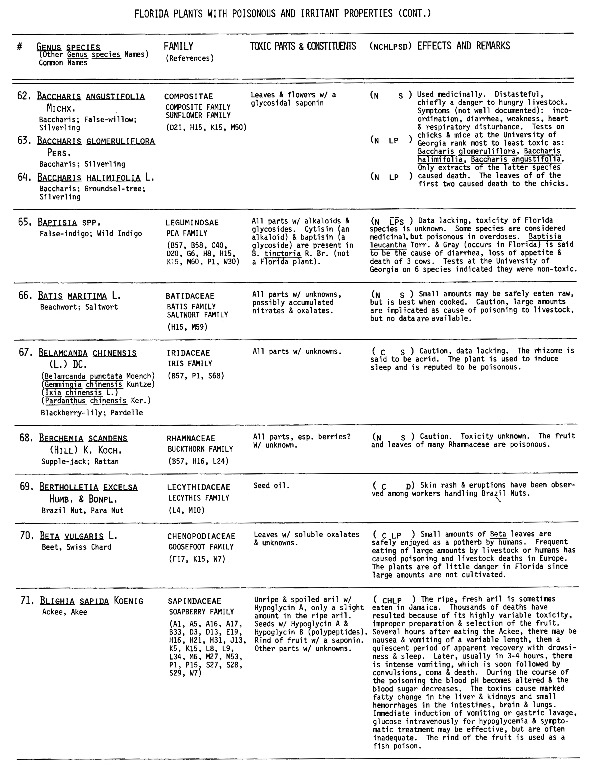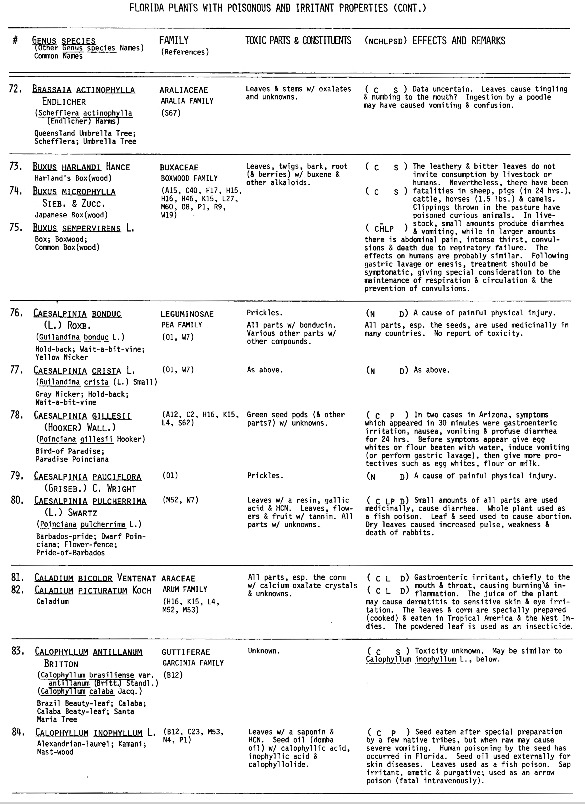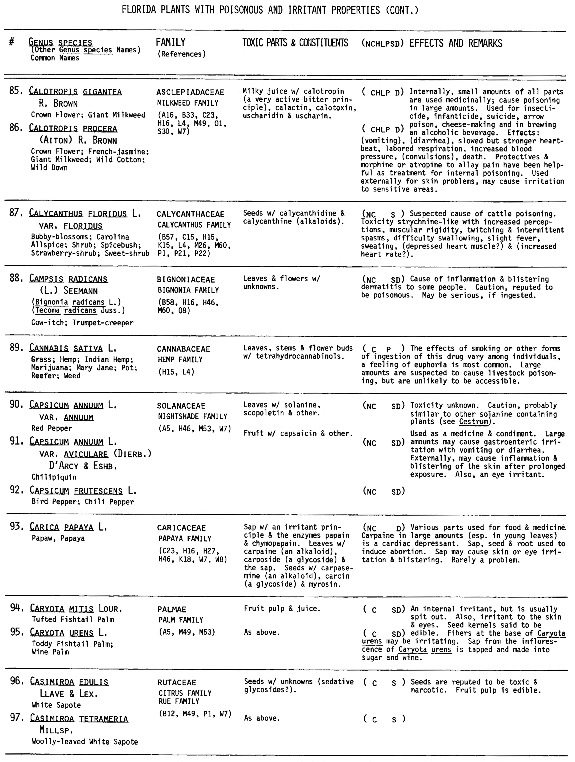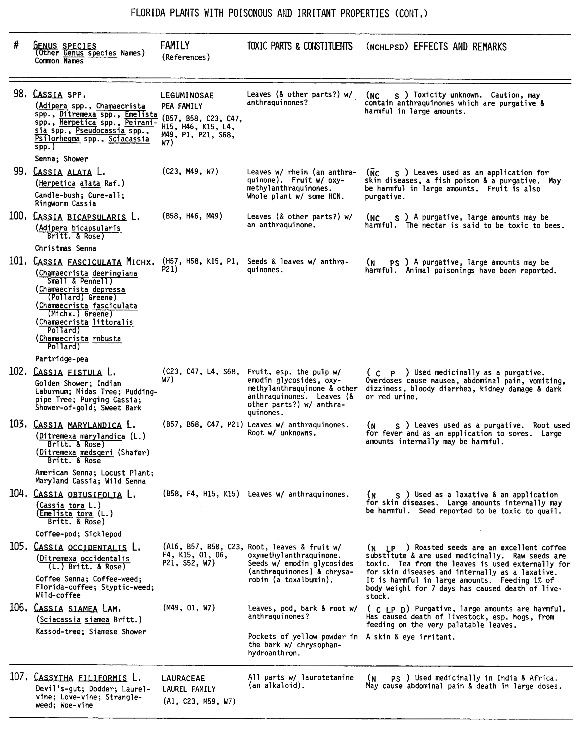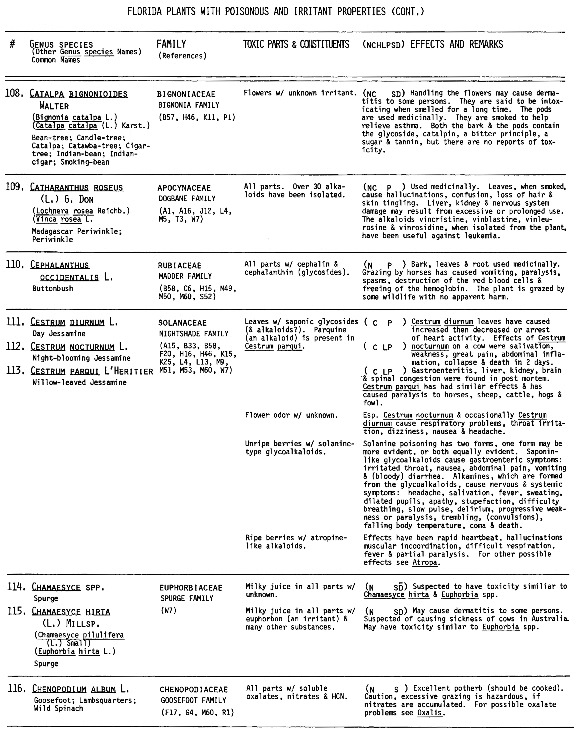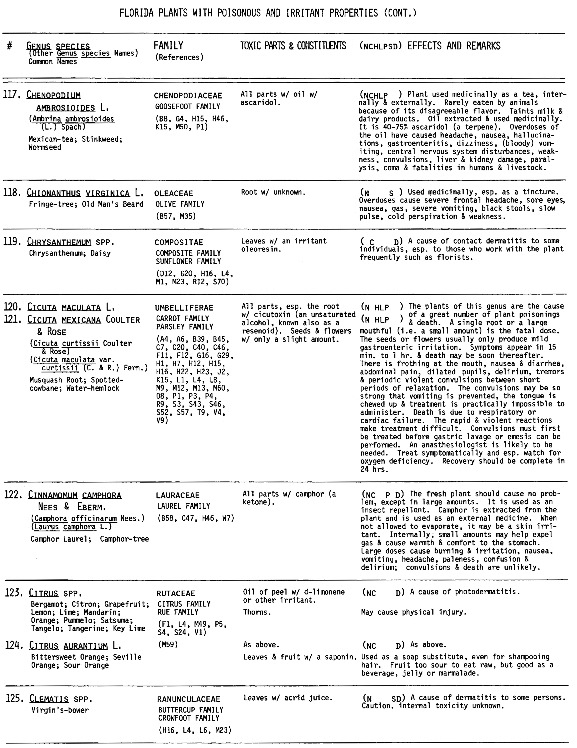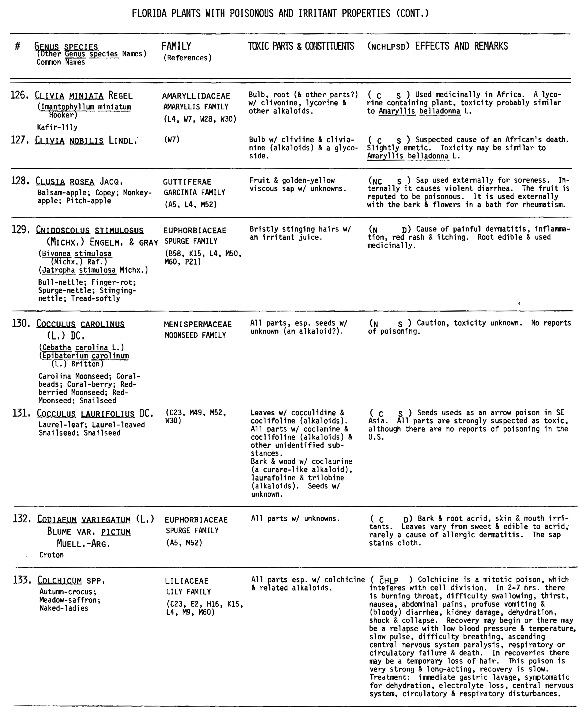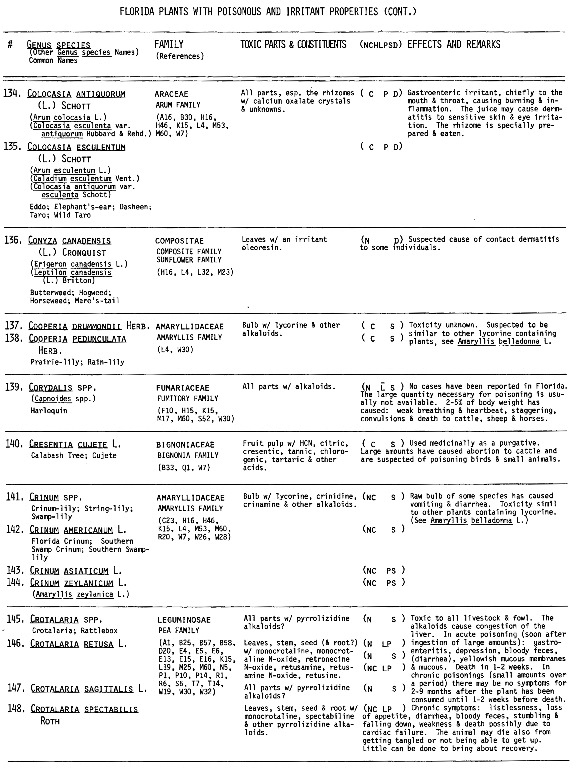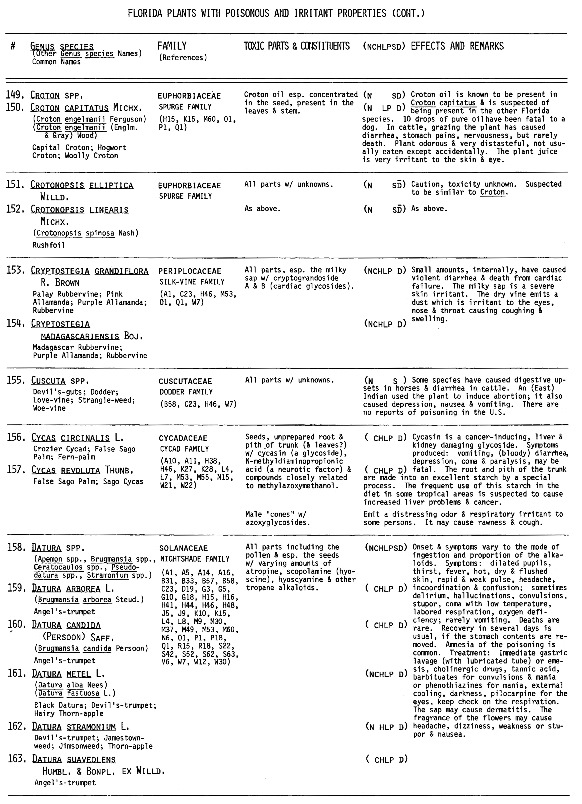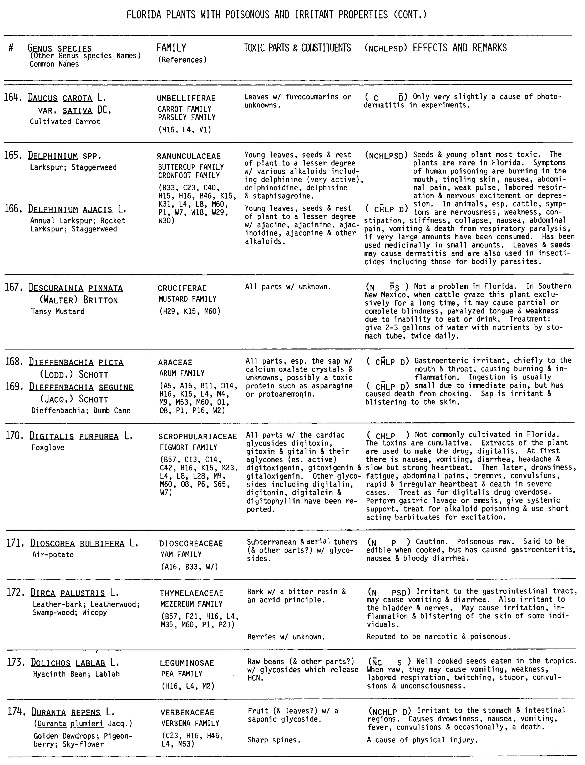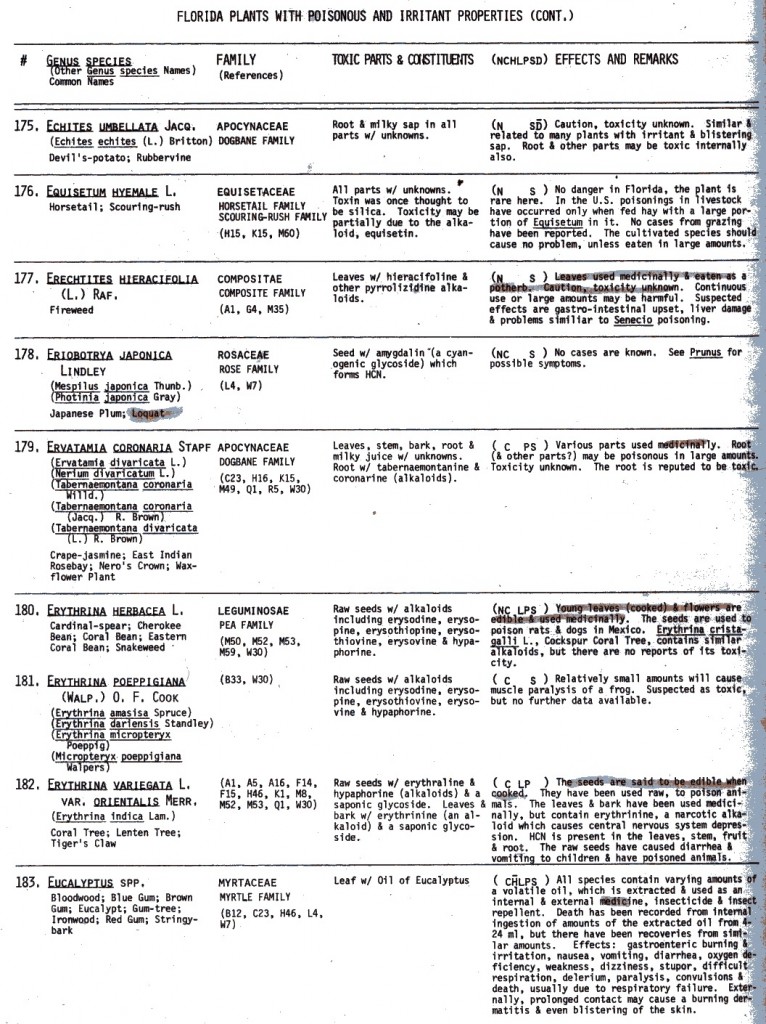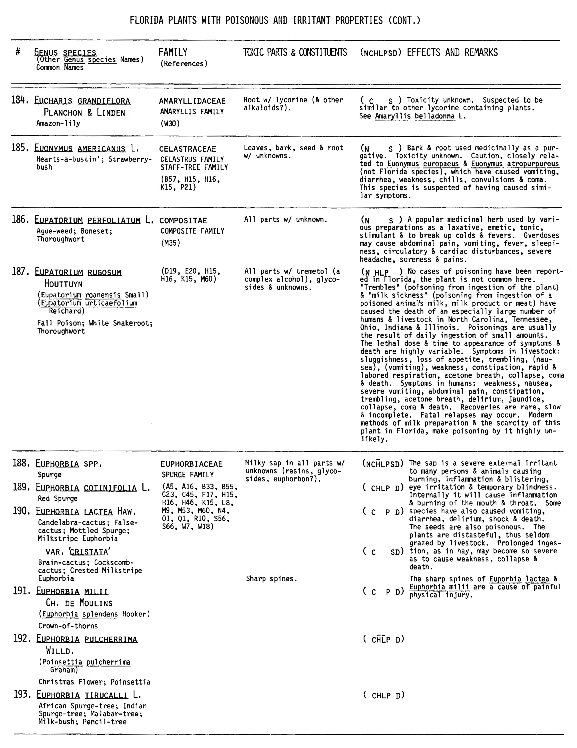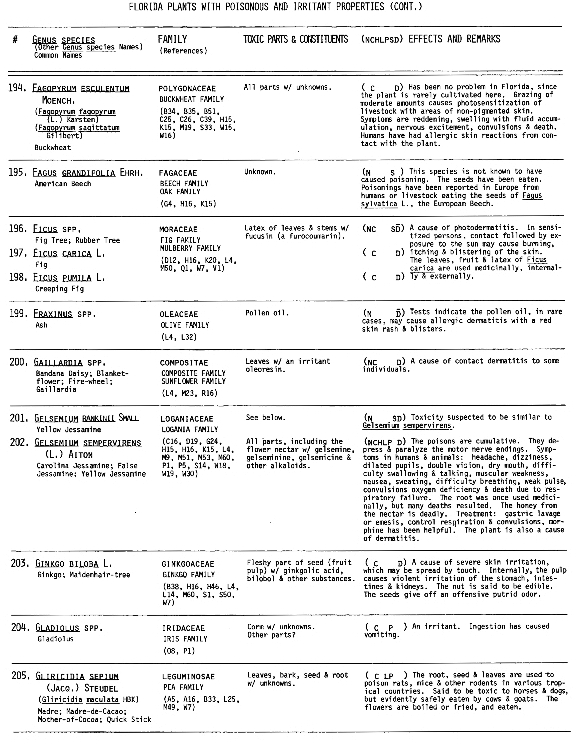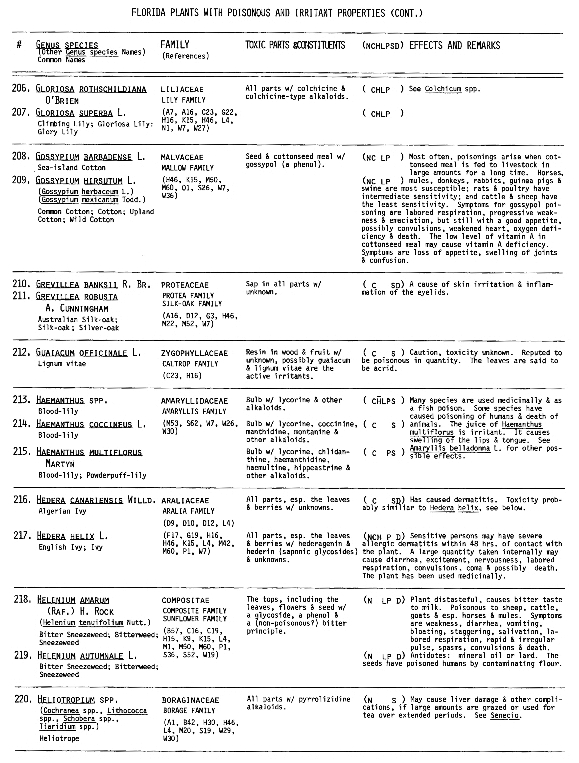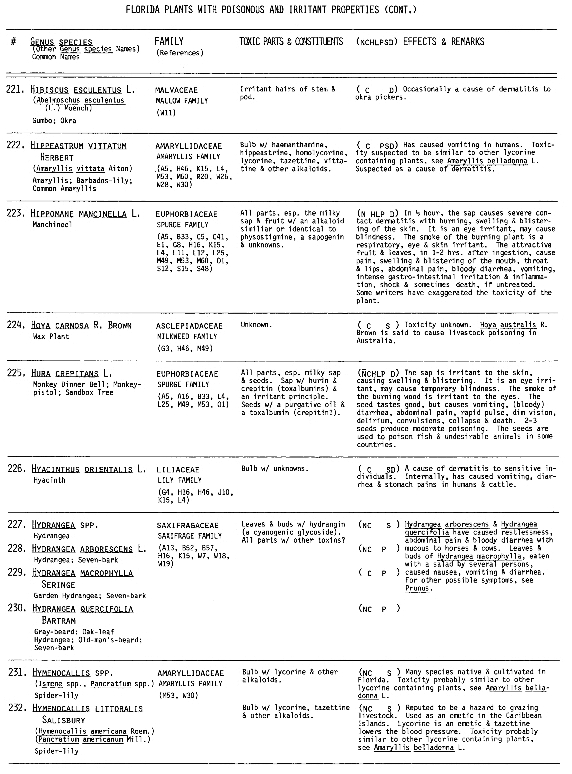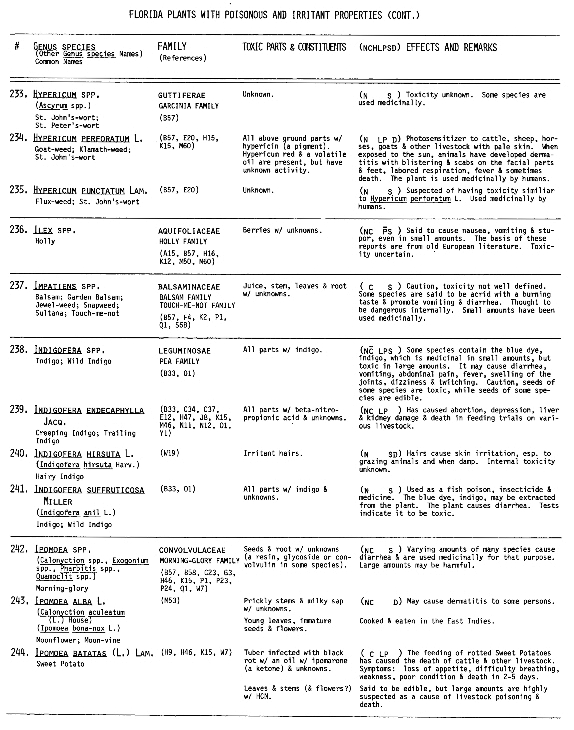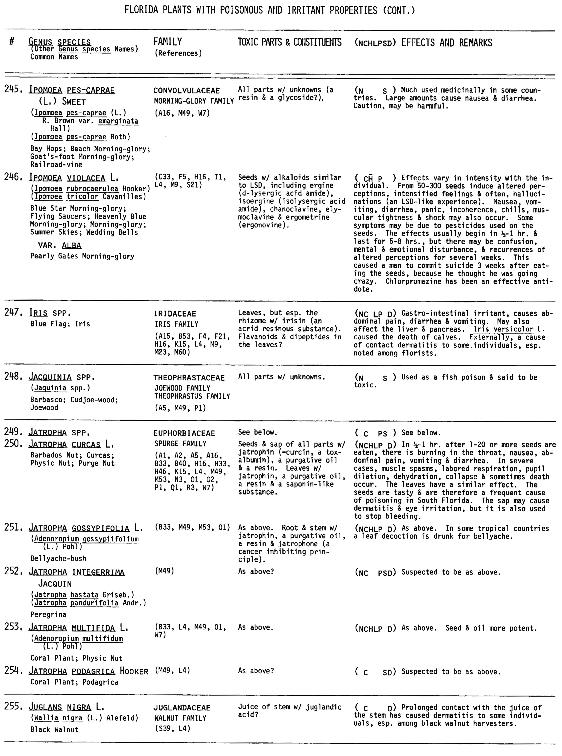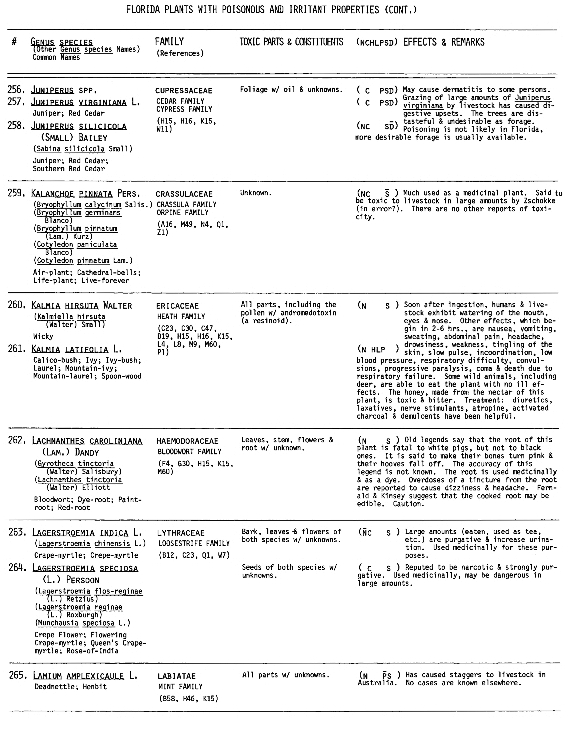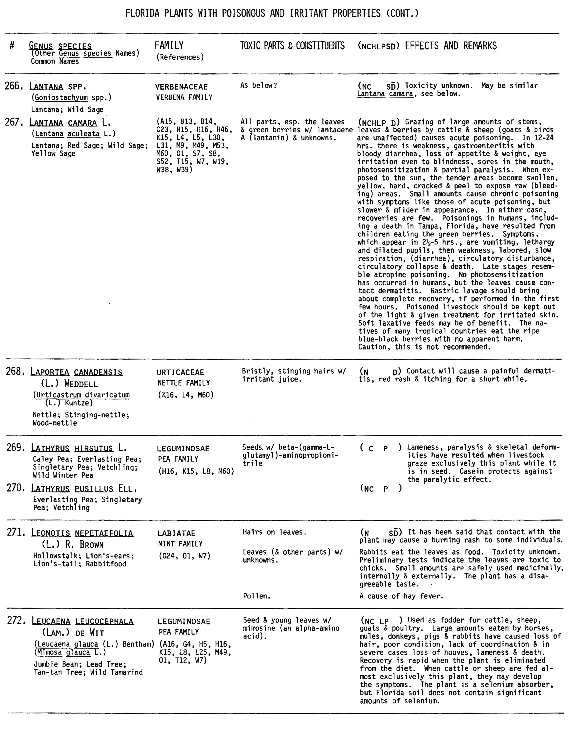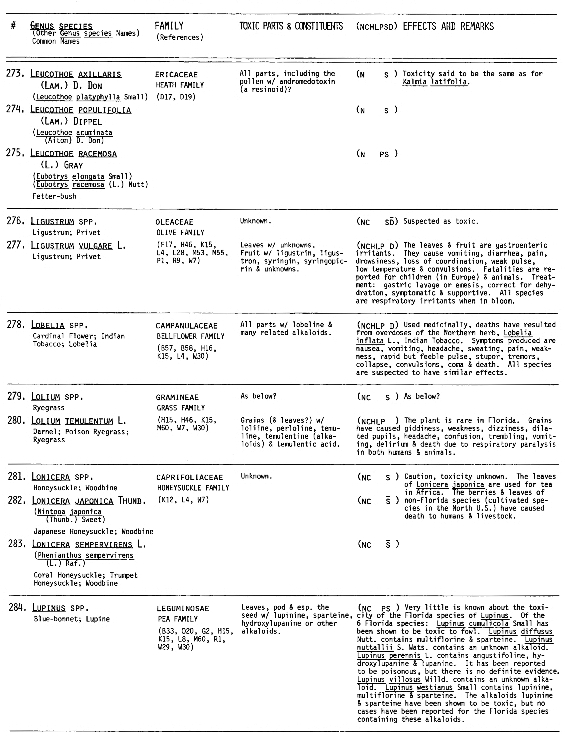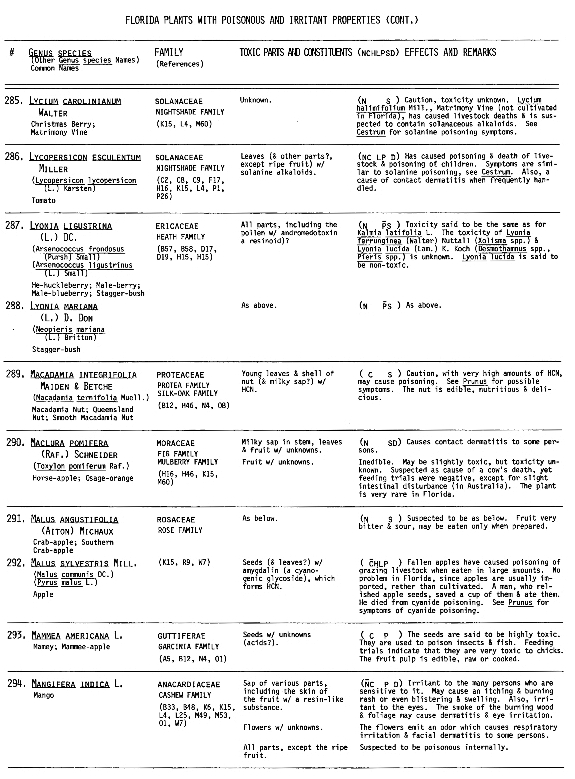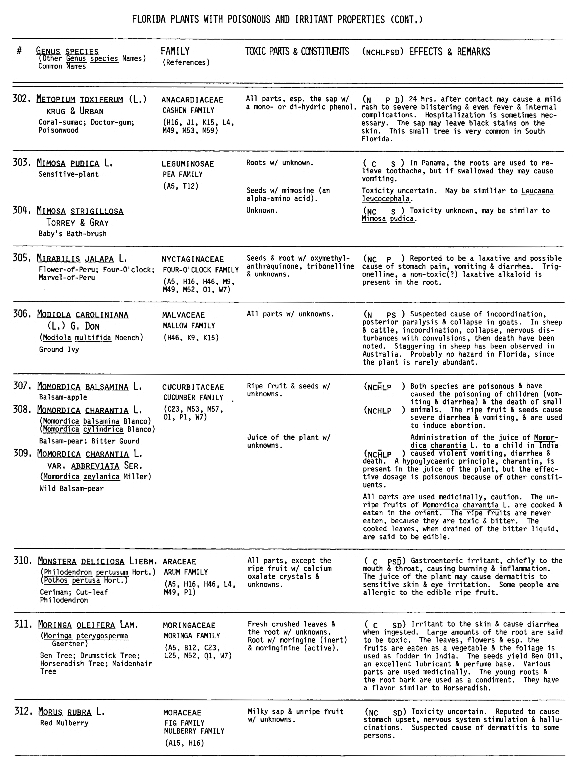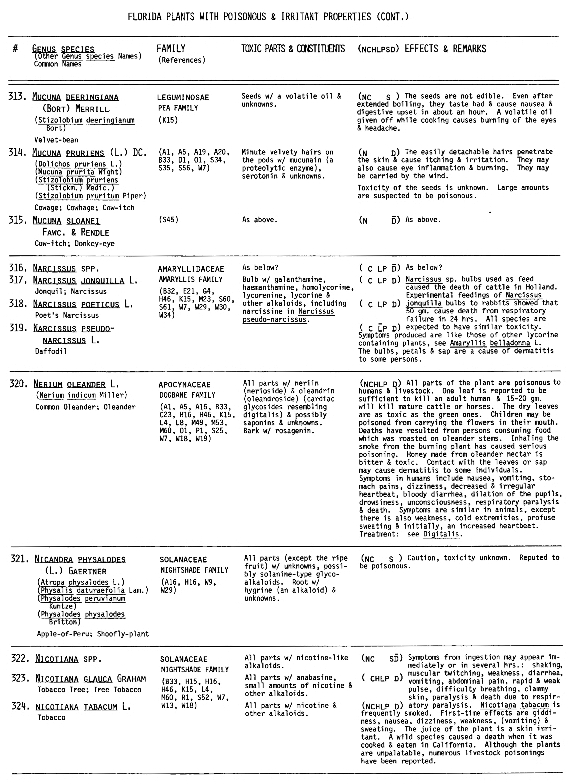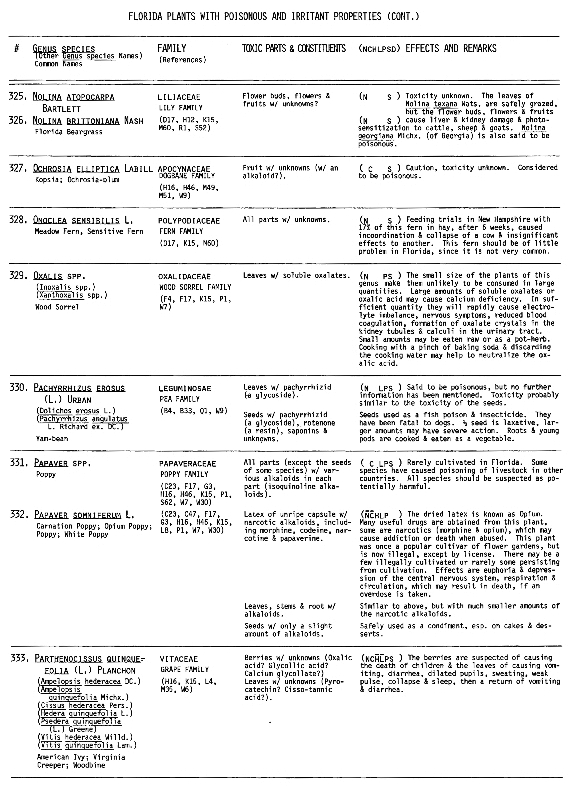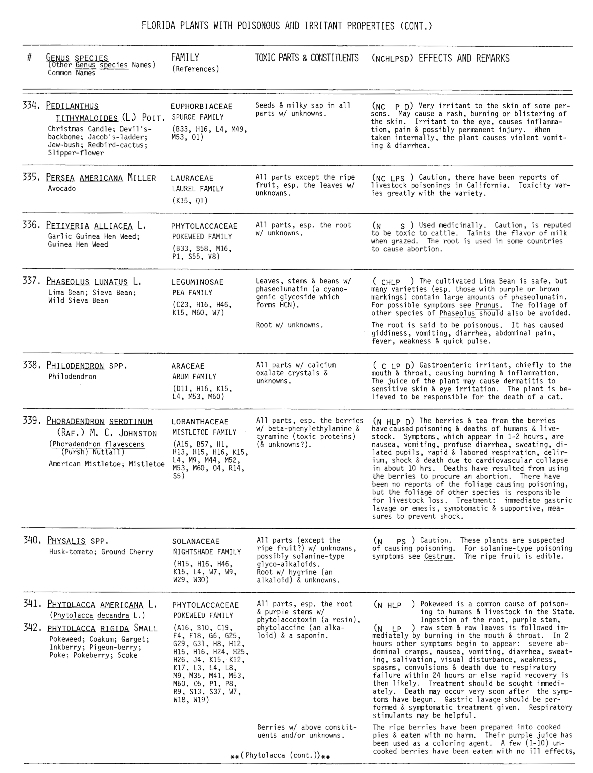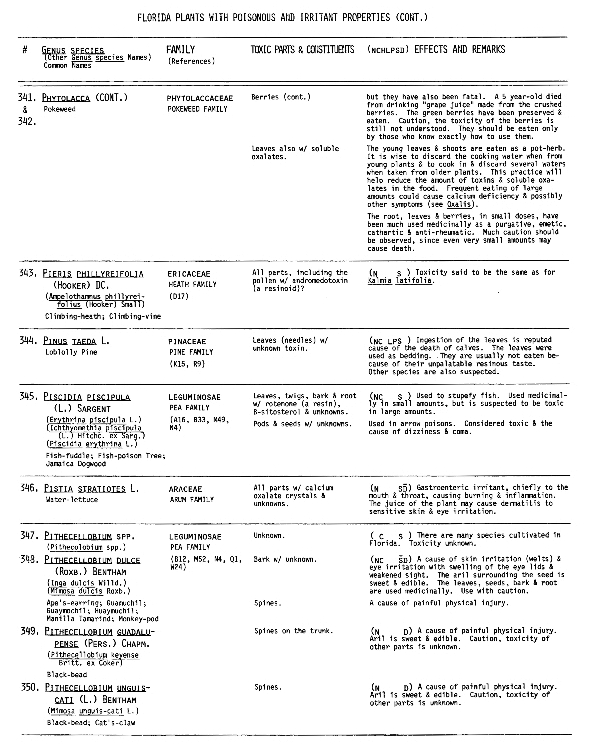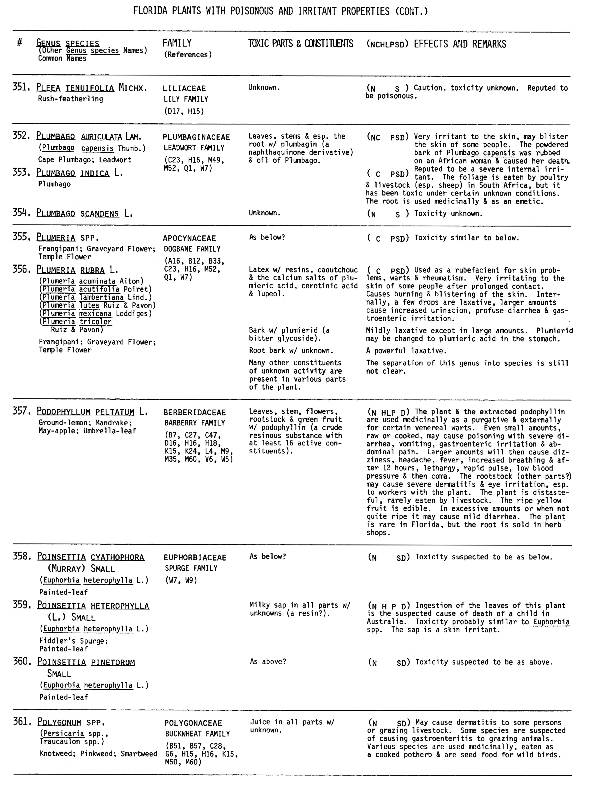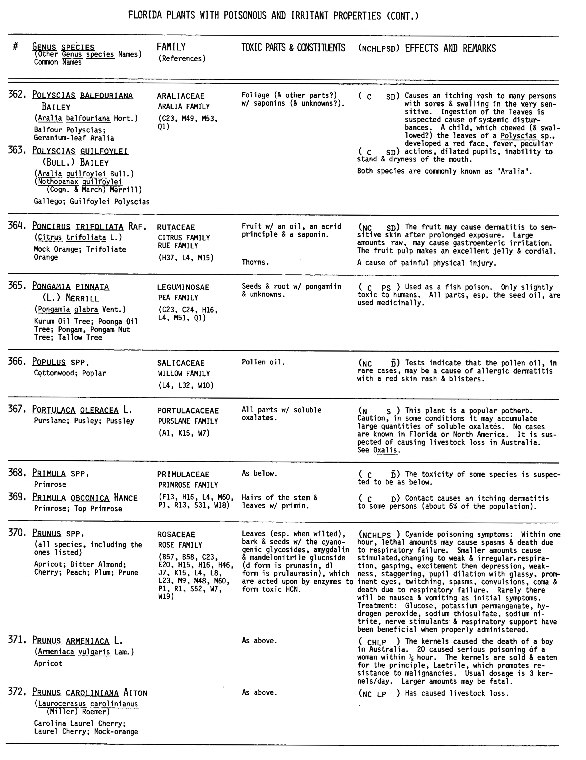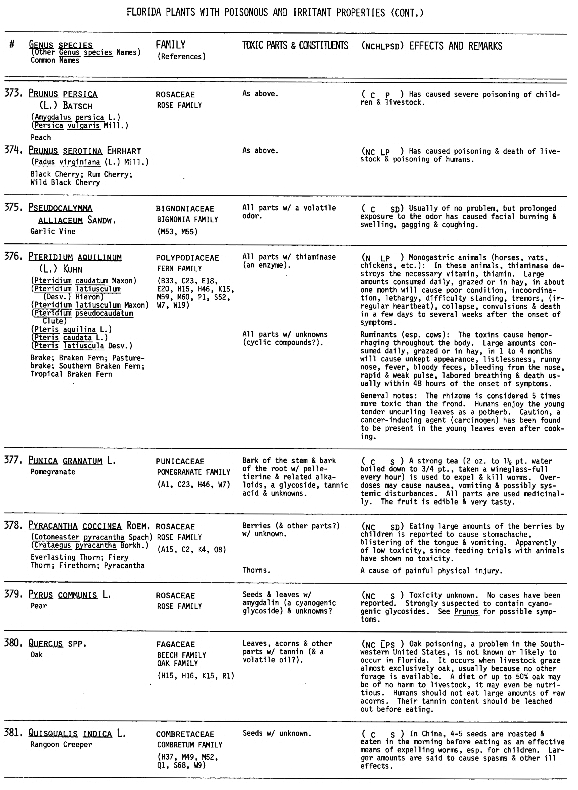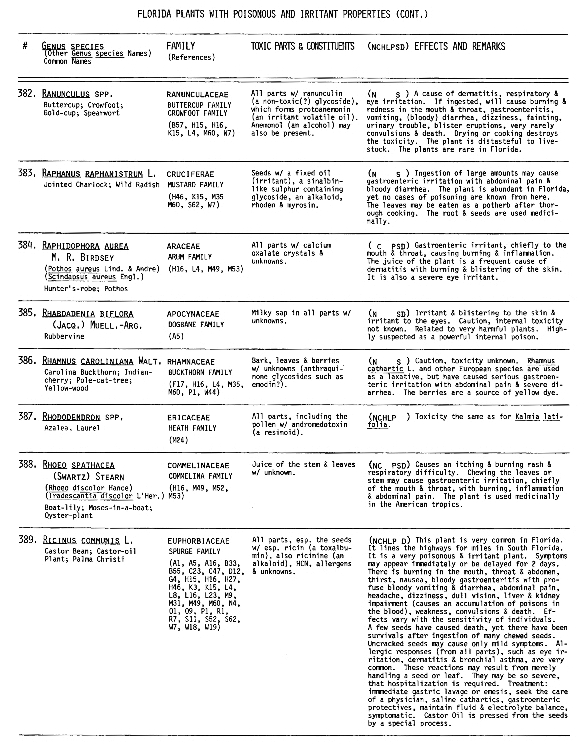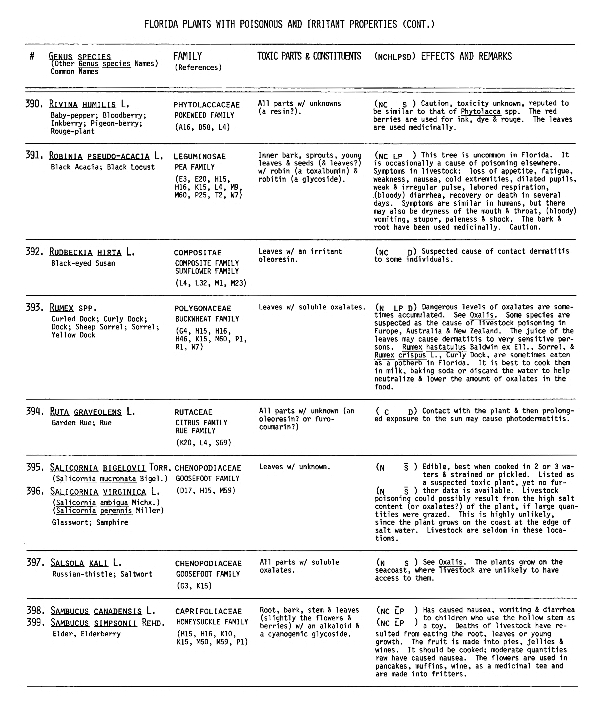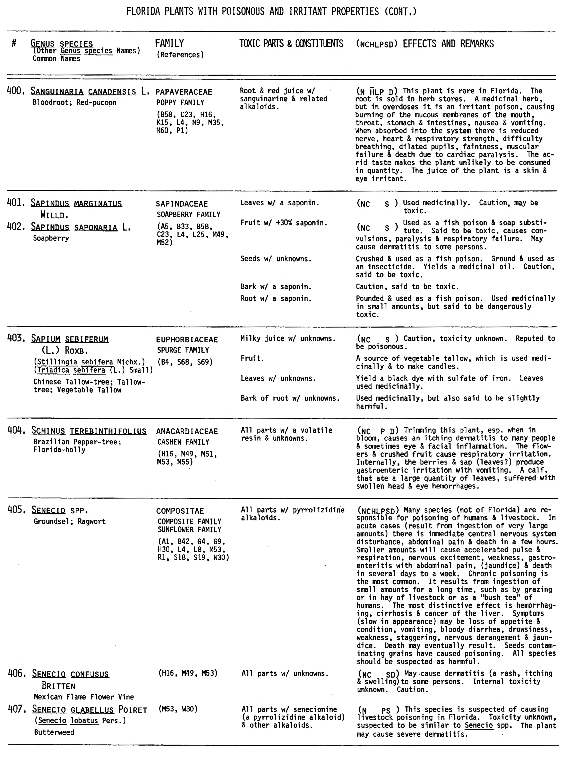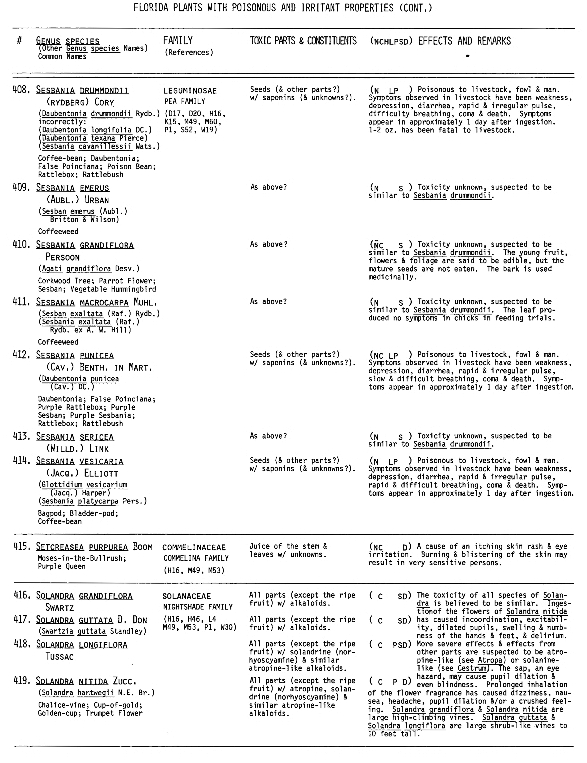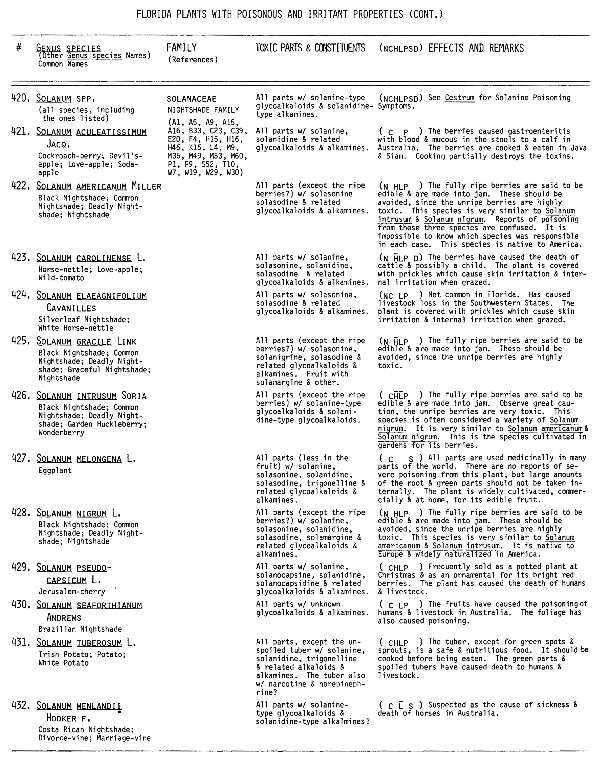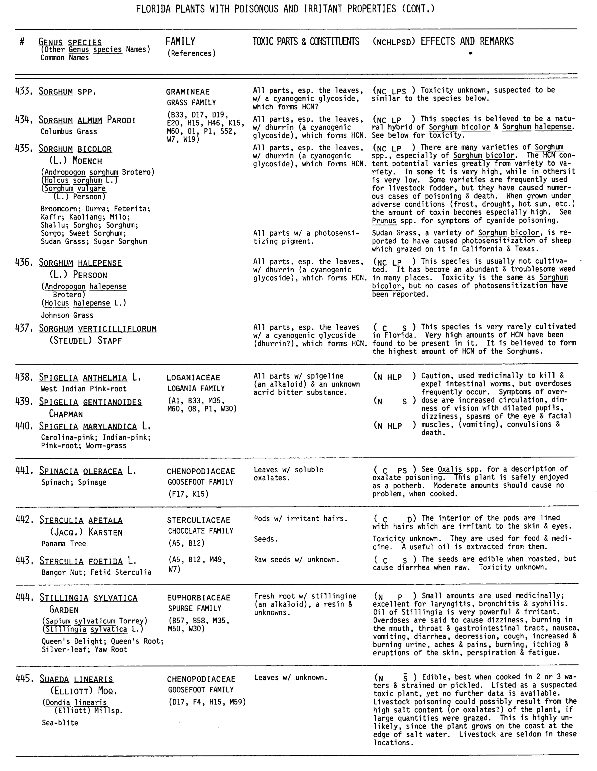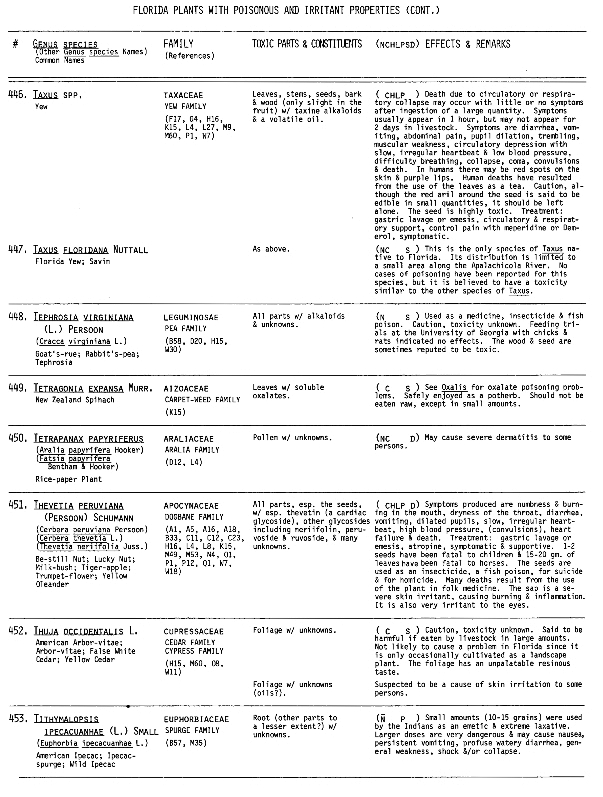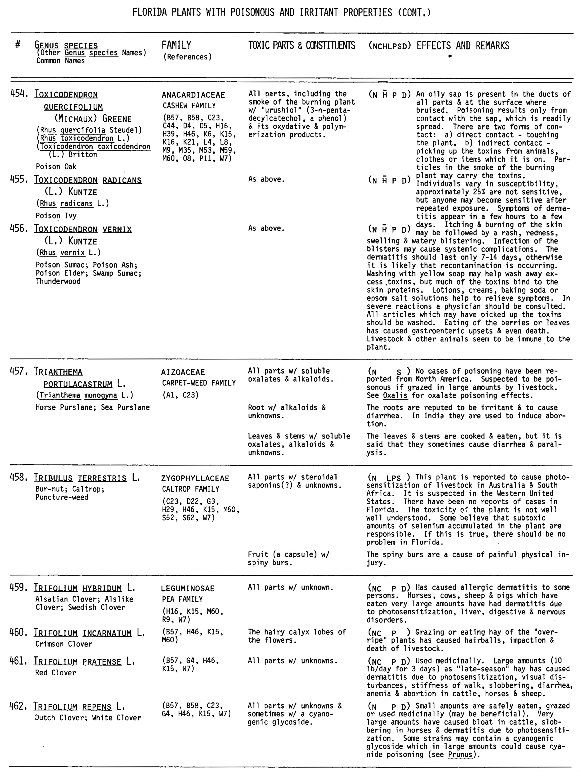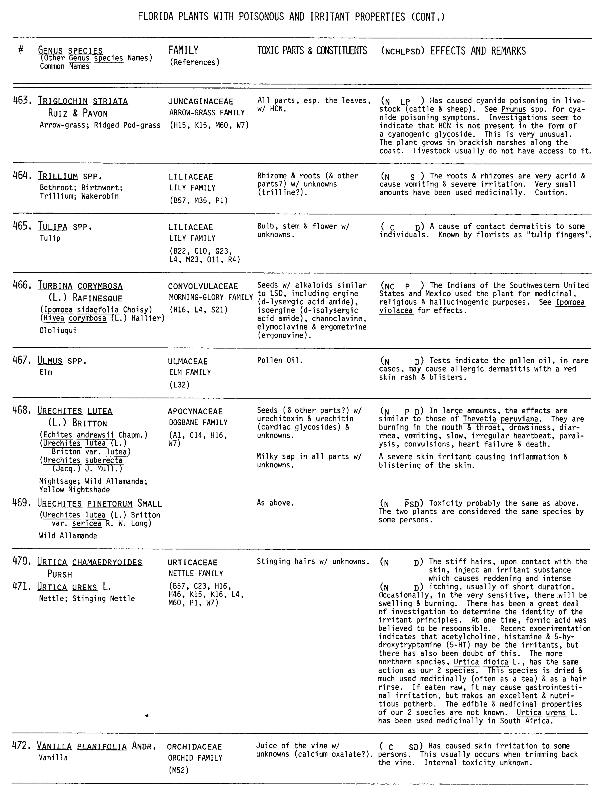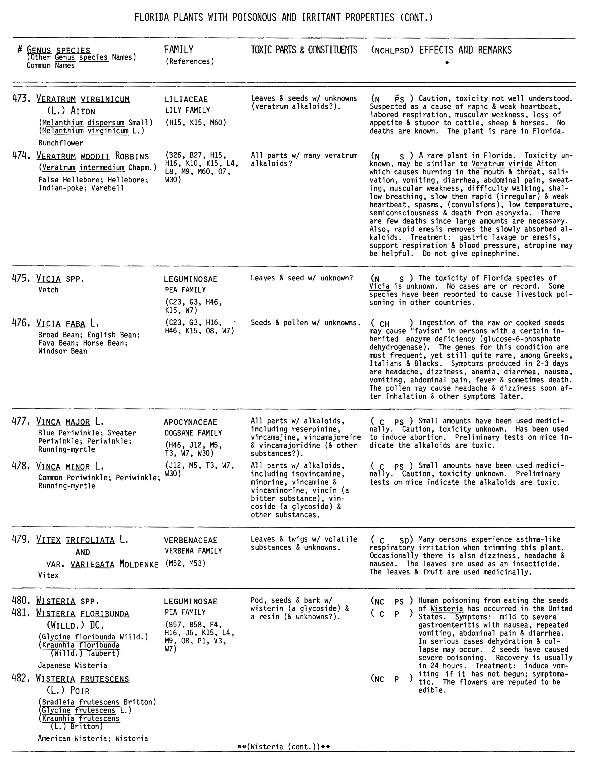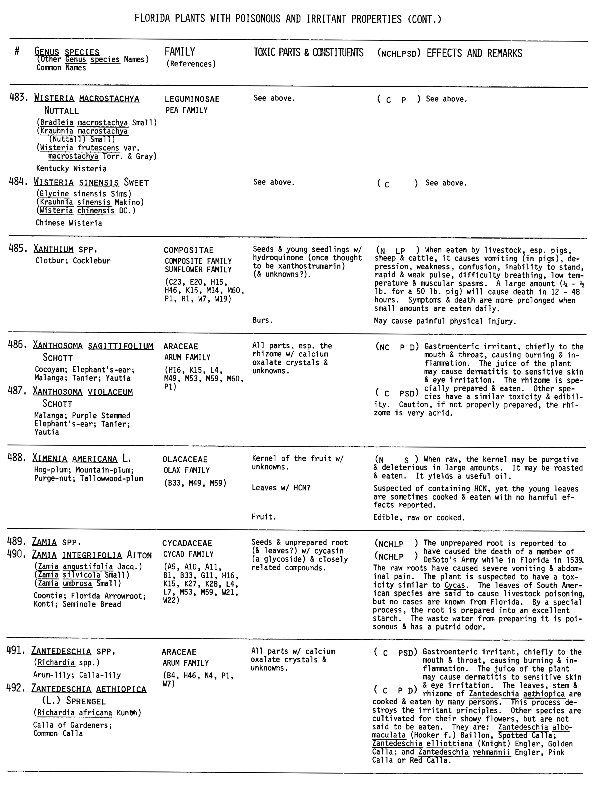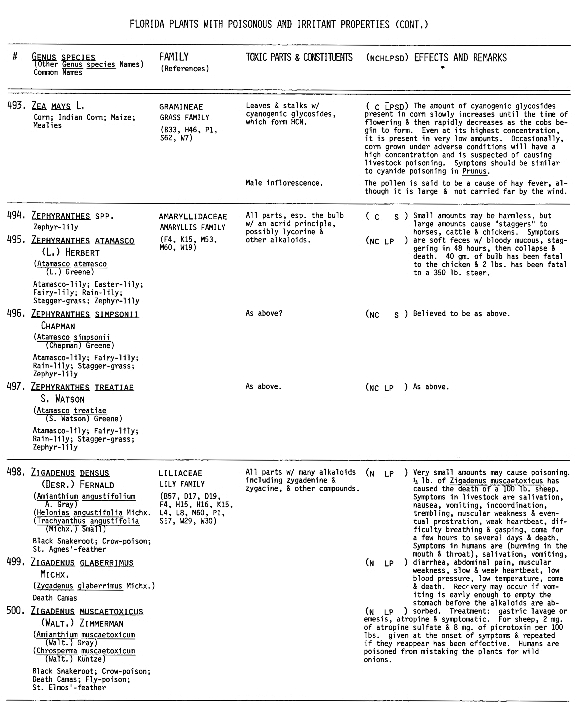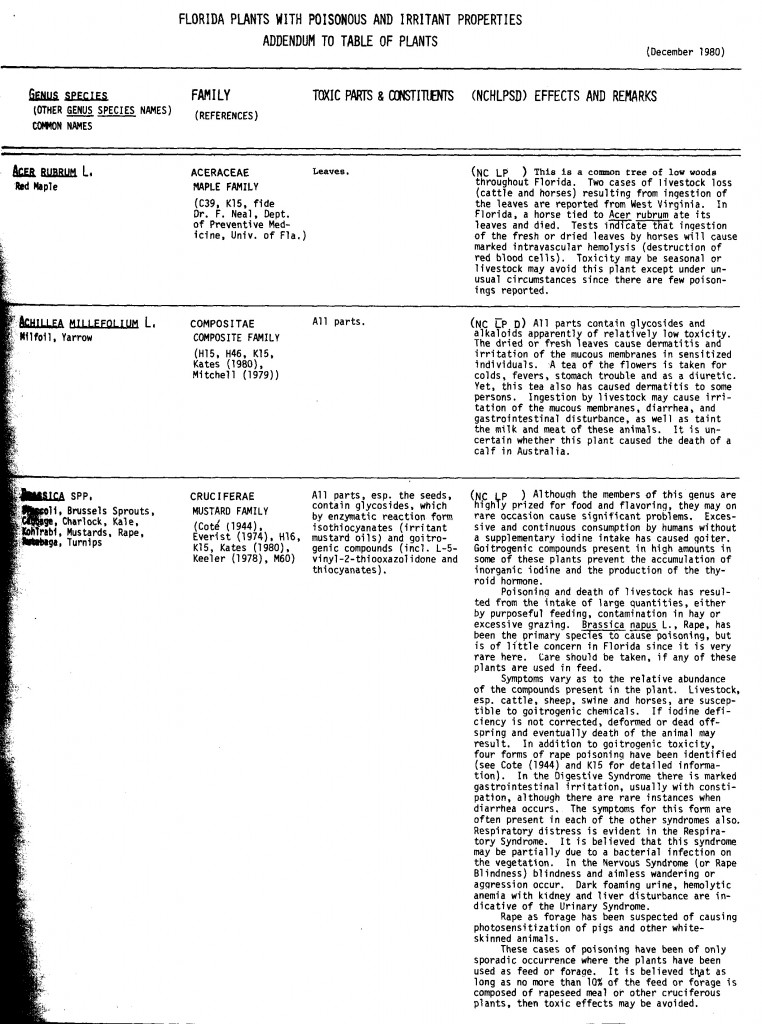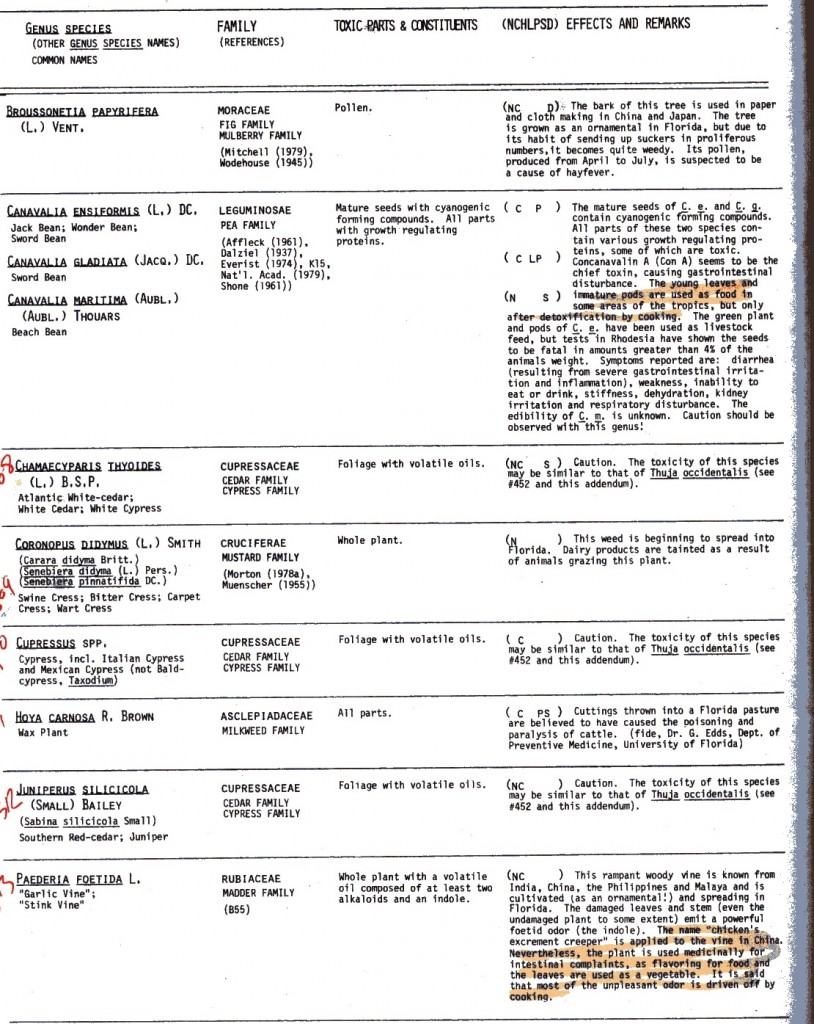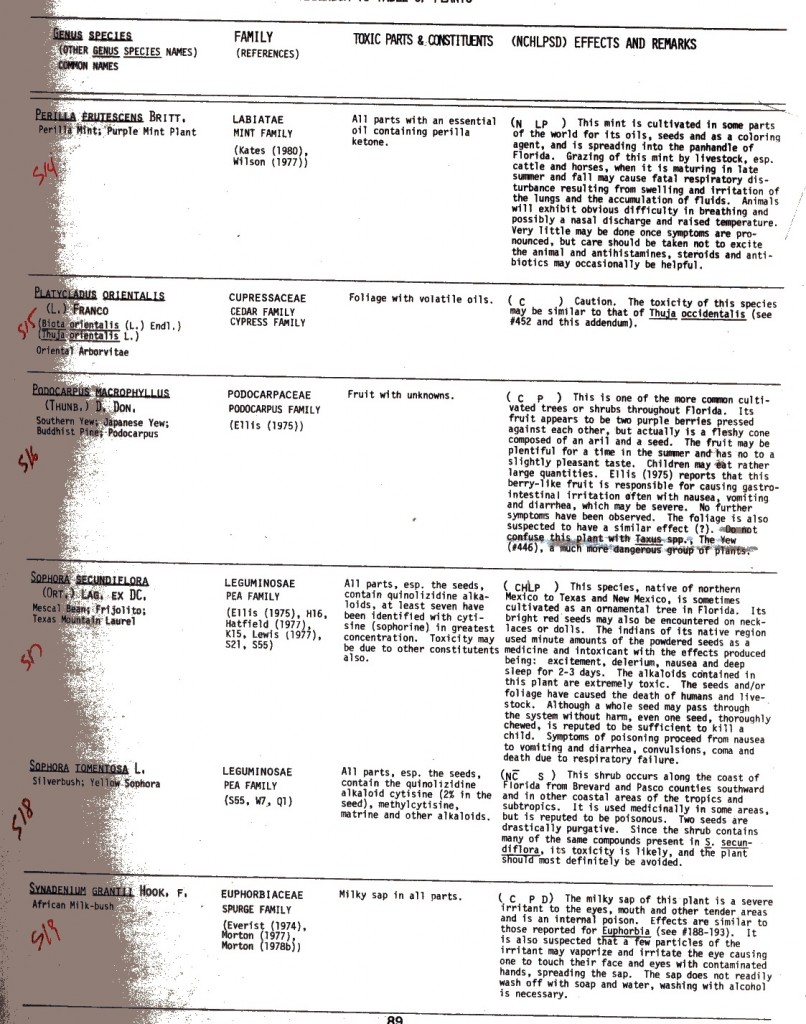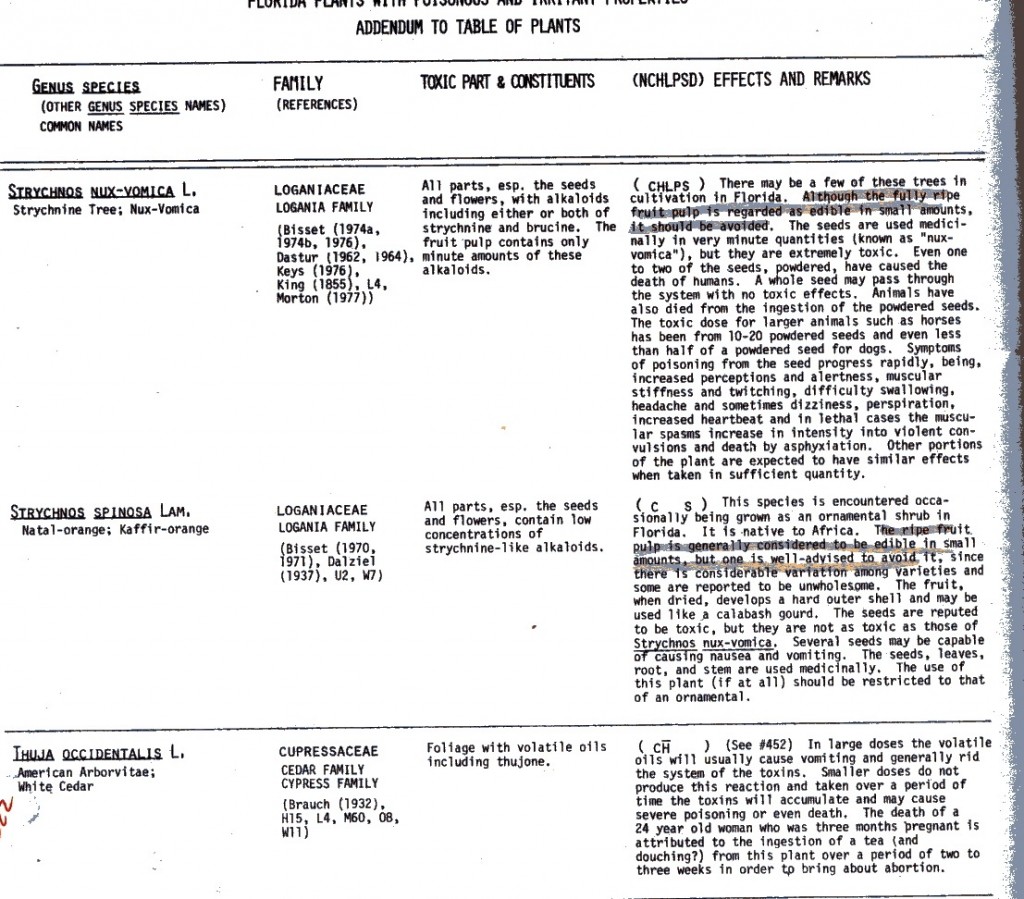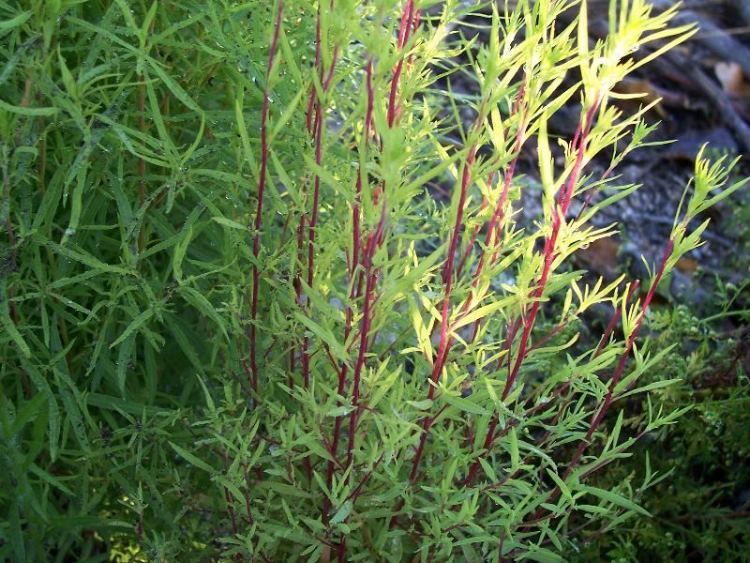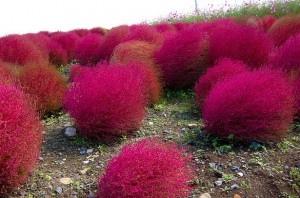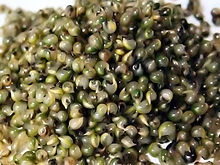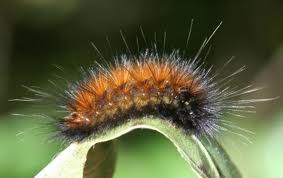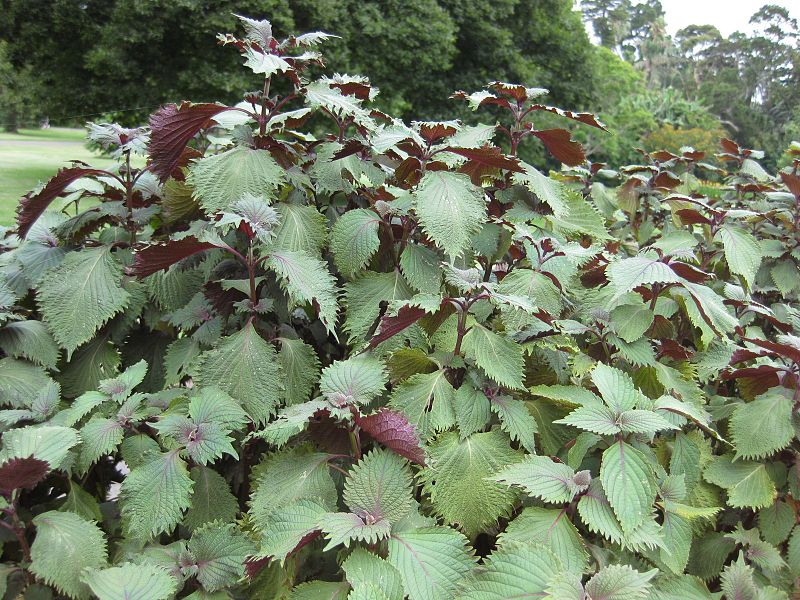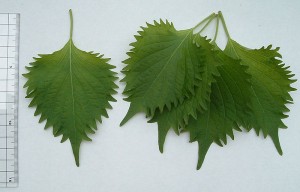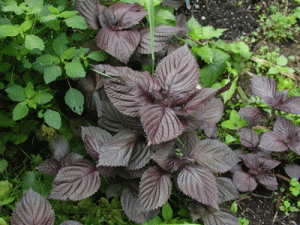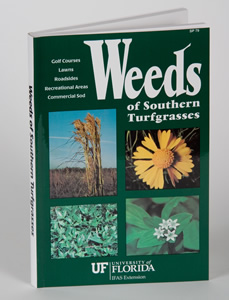
The link to the university’s site to buy the book — I do not get a cut — is here.
The list of known edibles in the book is below. Many of them are covered in separate articles on site. Click on the common name.
Page 10: Commelina diffusa, young tips boiled in ample water, blossoms raw. Dayflowers.
Page 11: Murdannia nudiflora, same as above. Doveweed.
Page 14: Cyperus esculentus, tubers, raw, boiled, roasted or candied, oil from tubers, seeds roasted as a coffee substitute. Chufa
Page 19: Cyperus rotundus, edible after drying, fresh are an insect repellant. See above.
Page 26: Anthoxanthum odoratum, dry leaves as tea, grain, caution as it is a blood thinner.
Page 31: Cenchrus echinatus, use as grain after burning off spines, or winnowing between leather pads. Sandspurs.
Page 32: Cenchrus incertus, same as above.
Page 34: Dactyloctenium aegyptium, dry seeds to make a flour, or mush, beer et cetera. Crowfoot Grass.
Page 65: Allium vineale, wild garlic, use like said. Wild Onion, Wild Garlic.
Page 67: Mollugo verticillata, leaves as potherb.
Page 71: Amaranthus blitum, Livid Amaranth, use cooked like spinach.
Page 72: Amaranthus hybridus, Smooth Pigweed, use cooked like spinach.
Page 73: Amaranthus verdis, Slender Amaranth, use cooked like spinach.
Page 88: Cirsium horridulum, all true thistles are edible, first year root raw or cooked, second year stalk peeled raw or cooked, leaves anytime peeled of spines, raw or cooked. Bull Thistle
Page 89: Conyza canadensis, barely edible as a spice, significant medicinal. Horseweed.
Page 90: Eclipta prostrata, young leaves and shoots cooked.
Page 91: Emilia fosbergii, from non-flowering plant, young leaves raw, or cooked, occasional use, long-term use can cause liver tumors.
Page 92: Erechtites hieraciifolia, raw or cooked, an acquired taste. Fireweed.
Page 103: Hypochoeris radicata, young leaves cooked (usually boiled.) False Dandelions
Page 105: Lactuca canadensis, young leaves cooked (usually boiled.) Lettuce Labyrinth
Page 107: Pyrrhopappus carolinianus, young leaves cooked (usually boiled.) False dandelions.
Page 109: Sonchus asper, young leaves cooked (usually boiled.) Sow Thistle.
Page 110: Taraxacum officinale, young leaves cooked, blossoms as tea or to flavor wine, panckakes, roasted roots. Dandelions.
Page 113: Youngia japonica, young leaves raw or cooked. False Hawksbeard.
Page 115: Capsella bursa-pastoris, young leaves for seasoning or greens after boiling, seeds as pepper, grind root add to salt and vinegar for horseradish substitute. Peppergrass.
Page 116: Cardamine hirsuta, leaves and seed pods for seasoning. The Little Mustards.
Page 117: Coronopus didymus, leaves and seed pods for seasoning. The Little Mustards.
Page 118: Descurainia pinnata, leaves and seed pods for seasoning. The Little Mustards.
Page 119: Lepidium virginicum, same as Capsella bursa-pasatopris. Peppergrass.
Page 120: Sibara virginica, young leaves and seed pods as seasoning. The Little Mustards.
Page 128: Erodium circutarium, young leaves boiled. Stork’s Bill
Page 129: Geranium carolinianum, young leaves boiled, very bitter, more a medicinal. Stork’s Bill
Page 130: Glechoma hederacea, young leaves cooked, much written about this plant. Henbit
Page 131: Lamium amplexicaule, young leaves raw or cooked. Henbit.
Page 132: Lamium purpureum, young leaves raw or cooked. Henbit.
Page 133: Prunella vulgaris, young leaves raw or cooked, tends to be bitter raw.
Page 134: Stachys floridana, root edible raw or cooked, leaves dried for tea, leaves boiled as famine food, musty flavored. Florida Betony
Page 137: Desmodium triflorum, threeflower ticktrefoil, in India traditionally boiled then mixed with dry fish. Yum. Tick Clover
Page 141: Medicago lupulina, seeds edible, leaves edible cooked but implicated in auto-immune diseases. Iffy. Black Medic
Page 146: Trifolium compestre, leave edible raw or cooked, blossoms, too. Family does not digest well.
Page 147: Trifolium dubium, leaves edible raw or cooked, blossoms too. See above.
Page 148: Trifolium repens, leaves edible raw or cooked, blossoms too. Clover.
Page 150: Vicia sativa, seeds cooked, leaves cooked, but some reports of toxicity in the lab, not in the field.
Page 152: Modiola caroliniana, leaves used to make a drink. Carolina Bristle Mallow
Page 154: Boerhavia diffusa, tender young leaves and shoots – cooked and used as a vegetable, root – baked, rich in carbohydrate and protein, though the flavor is bland and the texture sometimes woody. Seeds – cooked. It can be ground into a powder and added to cereals when making bread, cakes et cetera. If the root chemically burns mouth after cooking do not eat. Red Spiderling.
Page 157: Oxalis intermedia, leaves raw or cooked, entire plant edible. Sorrels
Page 158: Oxalis stricta, leaves raw or cooked. See above.
Page 159: Plantago aristata, young leaves raw or cooked, young seed spike raw or cooked, seeds raw or cooked. Plantains
Page 160: Plantago lanceolata, same as above
Page 161: Plantago major, same as above
Page 162: Plantago virginica, same as above
Page 163: Polygonum aviculare, young leaves, seeds, and blossoms, raw or cooked (probably P. caespitosum, too.) Blossom the hottest but also bitter. Large raw amounts can raise blood pressure..
Page 165: Rumex acetosella, young leaves raw or cooked (makes a nice tartlet with sour cream.) Root – cooked. It can be dried, ground into a powder and made into noodles. Seed – raw or cooked. Easy to harvest, but the seed is rather small. A drink similar to lemonade is made by boiling the leaves. Sheep Sorrel
Page 166: Rumex crispus, young leaves and seeds, raw or cooked, similar to above.
Page 168: Portulaca oleracea, entire plant above ground raw or cooked. Purslane.
Page 172: Duchesnea indica, berries raw, leaves cooked. Reports of it being poisonous are simply wrong. Indian strawberry
Page 176: Galium aparine, young shoots and leaves raw or cooked, seed roasted make an excellent coffee substitute. Old leaves toxic with silica. When the plant is young it stimulates the immune system and is good for the lymph system. Goosegrass.
Page 190: Centella asiatica, Gotu Kola, leaves edible raw or cooked, better cooked. Pennyworts.
Page 191: Daucus carota, root cooked, thin and stringy, flower clusters can be french-fried to produce a carrot-flavoured gourmet’s delight, the aromatic seed is used as a flavouring in stews et cetera, the dried roasted roots are ground into a powder and are used for making coffee substitute. Wild Carrots.
Page 192: Hydrocotyles, young leaves raw or cooked, better cooked, too many leaves raw will lower your blood pressure. Pennyworts.
Page 193: Parietaria floridana, young leaves, stems, flowers raw or cooked, diuretic, can make some itch, try sparingly at first. (In more than 20 years I have not met anyone who gets the itch.) Pellitory.
Page 196: Viola, above ground parts edible raw or cooked. Romans made blossoms into wine. Root is toxic. Violet Virtues.
Page 197: Viola arvensis, same as above
Page 198: Viola rafinesquii, same as above
I did not list many of the grass seeds as edible, but probably they are as I do not know of any native toxic grasses in North America.

